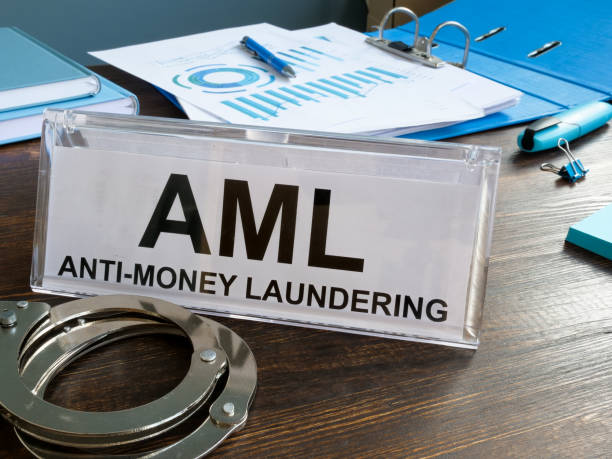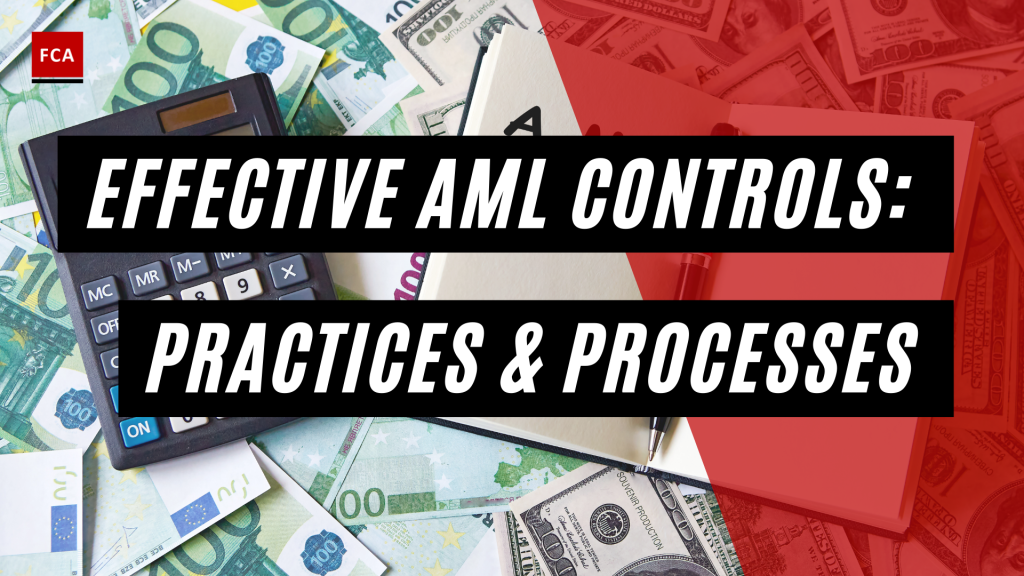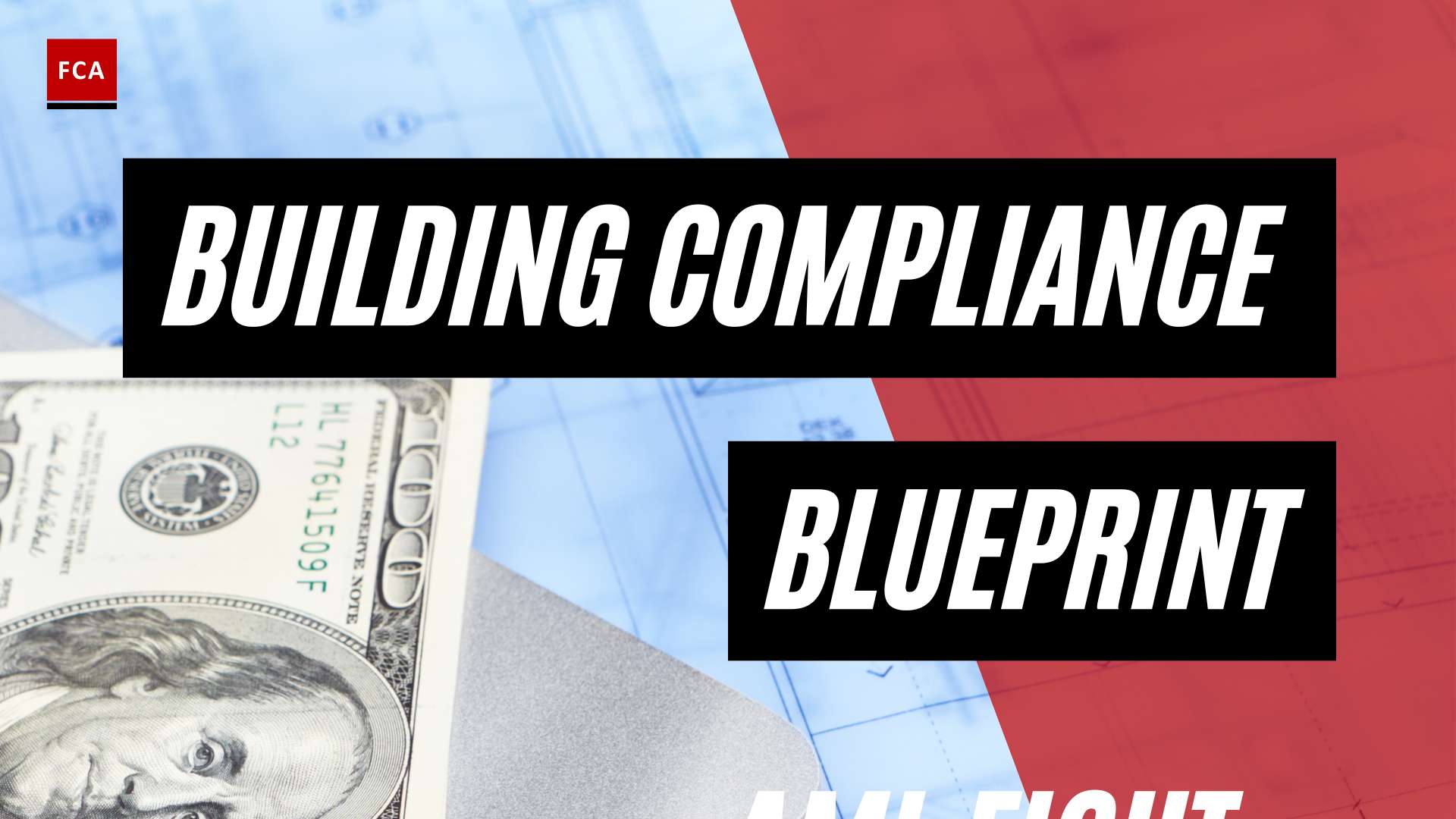In an era where financial crime is becoming more sophisticated and widespread, organizations worldwide are grappling with the challenges of preventing money laundering and meeting regulatory requirements.
With the right approach, effective AML controls can not only protect businesses from legal and financial risks but also contribute to a safer global financial system. Are you ready to discover the best practices and innovative solutions that can strengthen your organization’s AML compliance program and adapt to the ever-evolving landscape of risks and regulations? Let’s dive in.
Key Takeaways
Organizations must observe regulatory frameworks to combat money laundering and comply with regulations.
Risk assessment, customer due diligence, training & education are essential components of AML controls.
Implementing a risk-based approach, leveraging technology solutions and staying informed on changes in regulations are key best practices for successful AML control implementation.
Understanding AML Controls

Anti-money laundering (AML) controls form the bedrock of all comprehensive compliance programs, acting as a bulwark against money laundering and terrorist financing activities. These essential measures, implemented by financial institutions and other organizations, aim to prevent money laundering and comply with regulatory requirements, such as risk assessment, customer due diligence, and transaction monitoring.
To delve deeper, these controls are essentially a set of procedures that are designed to detect and prevent the illegal practice of generating income through illicit activities. They are the protective measures that ensure the integrity and transparency of our financial system. By implementing these controls, organizations can effectively manage their risk exposure and protect themselves from the financial and reputational damage associated with money laundering.
The crux of these controls revolves around three main processes: risk assessment, customer due diligence, and transaction monitoring. Risk assessment involves identifying and understanding the potential risks that an organization might face. It is a vital step that helps organizations stay ahead of the curve and prepare for possible threats.
Customer due diligence, on the other hand, involves verifying the identity of customers and assessing their suitability. It’s a crucial part of the AML controls that helps organizations ensure that they are not doing business with individuals or entities involved in illicit activities.
Lastly, transaction monitoring is the process of regularly checking the transactions of customers to detect any suspicious activities. This step is vital in identifying potential cases of money laundering that might otherwise go unnoticed.
In conclusion, AML controls are not just a regulatory requirement, but a necessary tool for any organization that wants to maintain its integrity, protect its reputation, and ensure the safety and soundness of the global financial system.
Key components of AML controls include:
A designated compliance officer
Written policies and procedures
Employee training
Ongoing monitoring
These controls are governed by various regulatory frameworks, such as the Bank Secrecy Act and FinCEN’s Customer Due Diligence Rule. Tackling prevalent challenges like resource constraints, and issues with data quality and management, is fundamental to preserving the efficiency of AML controls.
Key Components of AML Controls
A solid foundation for any AML compliance program lies in its key components. Assigning a compliance officer with pertinent experience and expertise is key in supervising the organization’s AML endeavors and guaranteeing regulatory compliance.
Comprehensive written policies and procedures provide a clear framework for AML compliance and serve as a reference for both employees and regulators.
Regular employee training ensures that staff members are well-informed about AML policies, procedures, and regulatory requirements, allowing them to perform their roles in compliance effectively. Ongoing monitoring, often through the use of technology, is vital for detecting warning signs, discrepancies, or potential issues in real time, especially in the context of ongoing customer due diligence.
Regulatory Framework for AML Controls
Navigating the regulatory landscape is an integral part of implementing efficient AML controls. Some key regulatory frameworks include:
The Bank Secrecy Act (BSA), serves as the primary legislative framework in the United States for ensuring adherence to optimal AML practices and addressing primary money laundering concerns.
The 6th Anti-Money Laundering Directive (6AMLD), provides guidelines and regulations for AML practices in the European Union.
The NFA Rule 2-9(c), outlines specific requirements for AML compliance for entities registered with the National Futures Association.
FinCEN’s customer due diligence (CDD) rule, mandates a risk-based approach to customer identification, transaction monitoring, and suspicious activity reporting.
These regulatory frameworks, established by federal banking agencies and guided by the Financial Action Task Force, help ensure that businesses and financial institutions, including any financial institution, are following best practices in preventing money laundering, financial crimes, and other illicit activities, as recommended by the Financial Crimes Enforcement Network.
Observing these regulatory frameworks is necessary for organizations to evade penalties, fines, and legal repercussions.
Essential AML Control Best Practices

In order to combat money laundering efficiently, organizations must embrace a set of best practices that tackle the unique challenges and risks associated with this intricate financial crime. These best practices include:
Adopting a risk-based approach to AML controls
Providing regular training and education for employees
Fostering effective communication and collaboration within the organization
Implementing these best practices allows organizations to not only comply with AML regulations but also establish a resilient compliance culture that aids in identifying and mitigating potential risks.
Risk-Based Approach
Adopting a risk-based approach to AML controls is vital for organizations to identify and prioritize risks, facilitating a more efficient allocation of resources and focused compliance efforts. The initial step in adopting a risk-based approach is to conduct an AML risk assessment, which involves analyzing the institutions:
customer base
products and services
geographic locations
other factors that may increase the risk of money laundering
This approach enables organizations to focus on high-risk areas, ensuring that AML controls are tailored to the specific risks faced by the institution.
Regular Training and Education
Employee education is a critical component of a successful AML compliance program.
Regular training and education ensure that employees are well-informed about AML policies, procedures, and regulatory requirements, enabling them to perform their roles in compliance effectively. Training should be provided during onboarding and on an ongoing basis, typically once annually or any time the AML process shifts or the business’s risk profile changes.
By empowering employees with the requisite knowledge and skills, organizations can cultivate a culture of compliance and lessen the risk of financial and reputational damage.
Effective Communication and Collaboration
Effective communication and collaboration among departments and teams play a crucial role in maintaining a strong AML compliance culture and addressing potential issues promptly.
Clear communication channels and collaboration mechanisms ensure that information related to AML risks and controls is shared across the organization, facilitating the timely identification and resolution of potential problems.
This can be achieved through regular meetings, dedicated communication channels, and the use of technology to promote communication and information sharing.
Implementing AML Controls: Step-by-Step Guide

While the implementation of AML controls may appear overwhelming, a methodical approach can help organizations efficiently form a robust compliance program.
Key steps include designating a compliance officer, developing written policies and procedures, and establishing customer due diligence processes.
Following this guide enables organizations to guarantee that their AML controls are well-structured, comprehensive, and in alignment with applicable laws and regulations.
Designating a Compliance Officer
Appointing a compliance officer with relevant experience and expertise is crucial for overseeing and managing AML controls within the organization. The compliance officer is responsible for ensuring that all processes are adhered to and kept up-to-date, filing reports, and ensuring the smooth running of the AML program.
This designated individual plays a pivotal role in maintaining customer relationships and ensuring compliance with regulations.
Developing Written Policies and Procedures
Developing comprehensive written policies and procedures provides a clear framework for AML compliance and serves as a reference for employees and regulators.
These policies and procedures should be tailored to the organization’s specific risks, products and services, and customer base, and must be regularly reviewed and updated to ensure continued compliance with evolving regulations and risks.
A successful AML policy should incorporate a risk-based methodology, customer due diligence protocols, automated transaction surveillance, and recurrent training and instruction.
Establishing Customer Due Diligence Processes
Establishing robust customer due diligence processes is key to identifying and mitigating potential money laundering risks, including addressing primary money laundering concern.
This involves verifying customer identities, assessing their risk profiles, and monitoring their transactions for any suspicious activity.
By implementing effective customer due diligence processes, organizations can ensure that they are able to detect potential money laundering activities early, reducing the risk of financial and reputational damage.
Leveraging Technology for AML Control Efficiency

In the current fast-paced, technology-driven world, employing technology is crucial to boost the efficiency and effectiveness of AML controls. Automated transaction monitoring and RegTech solutions can significantly improve AML control efficiency by reducing manual processes, streamlining compliance efforts, and enabling organizations to focus on high-risk areas and customers.
Automated Transaction Monitoring
Automated transaction monitoring enables organizations to:
Detect suspicious activities and patterns in real-time, leading to the filing of suspicious activity reports when necessary
Facilitate prompt investigation and reporting, including filing a currency transaction report when necessary
Ensure timely detection of potential money laundering activities
Help concentrate law enforcement efforts on the most pressing cases.
Employing automated transaction monitoring allows organizations to enhance their AML control efficiency while diminishing operational risks and regulatory burdens.
Integrating RegTech Solutions
RegTech solutions offer a powerful tool for streamlining AML compliance processes, reducing regulatory risks, and supporting the adoption of innovative tools and techniques.
By integrating RegTech solutions into their AML controls, organizations can optimize their compliance procedures, decrease regulatory risks, and endorse the utilization of advanced tools and techniques.
Furthermore, these solutions can help organizations manage supervisory resources efficiently and detect and assess risks associated with money laundering.
Adapting to Evolving AML Regulations and Risks

Given the ever-evolving landscape of AML regulations and risks, it is absolutely essential that organizations stay updated on regulatory alterations and carry out regular risk assessments to guarantee sustained compliance. This isn’t a one-time task, but rather a continuous effort that requires vigilance and adaptability.
This proactive approach enables organizations to adjust their AML controls in response to new threats and regulatory requirements, safeguarding their reputation and avoiding potential penalties for non-compliance. It’s like playing a never-ending game of chess, where the rules keep changing and the stakes are high. It’s not just about avoiding penalties, but also about maintaining the trust of customers and stakeholders, which is invaluable in today’s competitive business environment.
Staying Informed on Regulatory Changes
Keeping up-to-date with regulatory changes helps organizations adjust their AML controls accordingly and avoid potential penalties for non-compliance.
Organizations can stay informed on regulatory changes by regularly monitoring news and updates from regulatory bodies, attending industry events, and consulting with legal and compliance professionals.
Staying informed allows organizations to keep their AML controls up-to-date and in compliance with the latest laws and regulations.
Conducting Periodic Risk Assessments
Regular risk assessments enable organizations to identify emerging risks and update their AML controls to address new threats effectively.
By conducting periodic risk assessments, organizations can ensure that their AML controls are up-to-date and effective in detecting and mitigating potential money laundering risks.
This can be achieved by analyzing customer data, scrutinizing customer profiles, and observing customer transactions.
Common AML Control Challenges and Solutions

The implementation of effective AML controls comes with its hurdles, including resource constraints and issues concerning data quality and management.
These challenges are not uncommon and are faced by organizations across various industries. Resource constraints can stem from a lack of skilled personnel, insufficient budget allocations, or inadequate technology infrastructure. On the other hand, data quality and management issues can arise due to outdated systems, lack of standardization, or ineffective data governance policies.
However, these challenges can be addressed through efficient allocation of resources, technology adoption, and data governance practices. Efficient allocation of resources involves prioritizing tasks based on their criticality and impact on the organization’s AML compliance. This ensures that the most important tasks are given precedence and are adequately resourced.
Adopting technology can greatly enhance an organization’s ability to manage and analyze data, automate routine tasks, and improve overall operational efficiency. This can range from implementing sophisticated AI and machine learning algorithms for transaction monitoring to using cloud-based solutions for data storage and management.
Data governance practices involve establishing clear policies and procedures for data management, ensuring data accuracy and consistency, and promoting data transparency and accessibility across the organization.
By addressing these challenges, organizations can ensure continued compliance and success in the fight against money laundering, thereby safeguarding their reputation and financial stability in the long run.
Resource Constraints

Resource constraints, such as personnel, budget, and technology limitations, can hinder the effectiveness of AML controls. To mitigate these constraints, organizations should prioritize high-risk areas, leverage technology to automate processes, and consider outsourcing certain AML functions to specialized service providers.
In more detail, personnel constraints can be addressed by investing in training and development to ensure that employees are equipped with the necessary skills and knowledge to effectively implement AML controls. Budget constraints can be managed by allocating resources strategically, focusing on high-risk areas that require the most attention.
Technology limitations can be overcome by adopting advanced solutions like AI and machine learning to automate routine tasks and improve efficiency. Finally, outsourcing certain AML functions to specialized service providers can help organizations access expert knowledge and skills, while also freeing up internal resources to focus on core business functions.
Embracing these strategies enables organizations to maintain the effectiveness of their AML controls despite resource limitations.
Data Quality and Management
Ensuring data quality and effective management is crucial for accurate risk assessment, customer due diligence, and transaction monitoring. To address data quality and management issues, organizations should implement robust data governance practices, such as establishing data standards, creating data quality metrics, and implementing data quality control processes.
Additionally, technology solutions, such as automated transaction monitoring and RegTech solutions, can help guarantee data quality and management.
Summary and Conclusion

In conclusion, efficient AML controls are vital for organizations to curb money laundering, adhere to regulatory requirements, and sustain a robust compliance culture. Implementing best practices, leveraging technology, and adapting to evolving risks and regulations are key to achieving success in AML compliance.
Through staying informed, carrying out regular risk assessments, and tackling common challenges, organizations can make sure that their AML controls stay robust and effective in combating financial crime.
Frequently Asked Questions
This section contains answers to frequently asked questions about AML best practices, processes and controls, compliance controls, and effective AML compliance training programs. These FAQs will help to clarify any doubts and provide additional insights into the world of AML compliance.
What is the role of a compliance officer in AML controls?
The compliance officer plays an integral role in AML controls, overseeing the organization’s efforts to adhere to regulations and maintain customer relationships. They are responsible for ensuring the successful execution of the AML program.
What are the AML processes and controls?

Answer: AML processes and controls are measures implemented by organizations to identify, prevent, and report any potential money laundering activities. Key components of AML controls include:
A designated compliance officer
Written policies and procedures
Employee training
Ongoing monitoring
What are the key elements of an effective AML compliance training program?
The key elements of an effective AML compliance training program include:
Strong emphasis on leadership
Qualified personnel
Risk evaluations
Regulations and protocols
Reporting
Ongoing surveillance
What are the internal controls of BSA AML?
BSA AML internal controls involve establishing and following policies, procedures and processes to reduce the risk of money laundering and other illicit activity, and ensure compliance with all applicable regulations.








